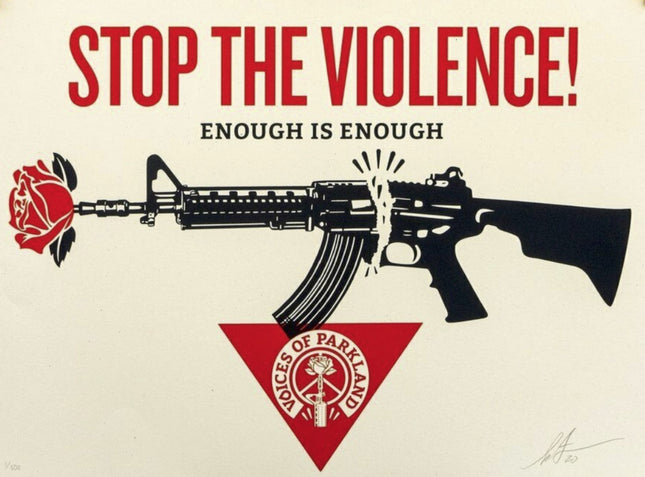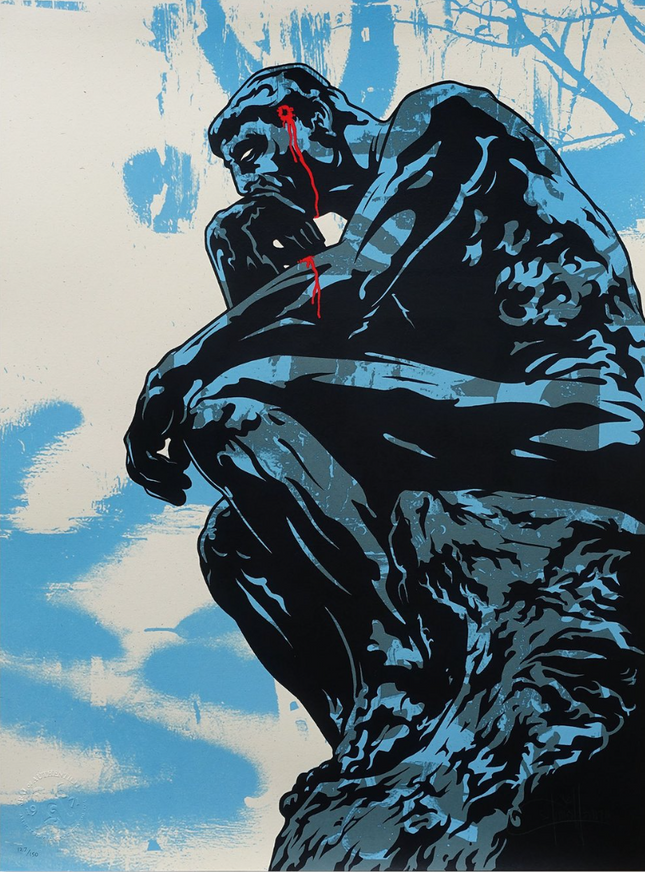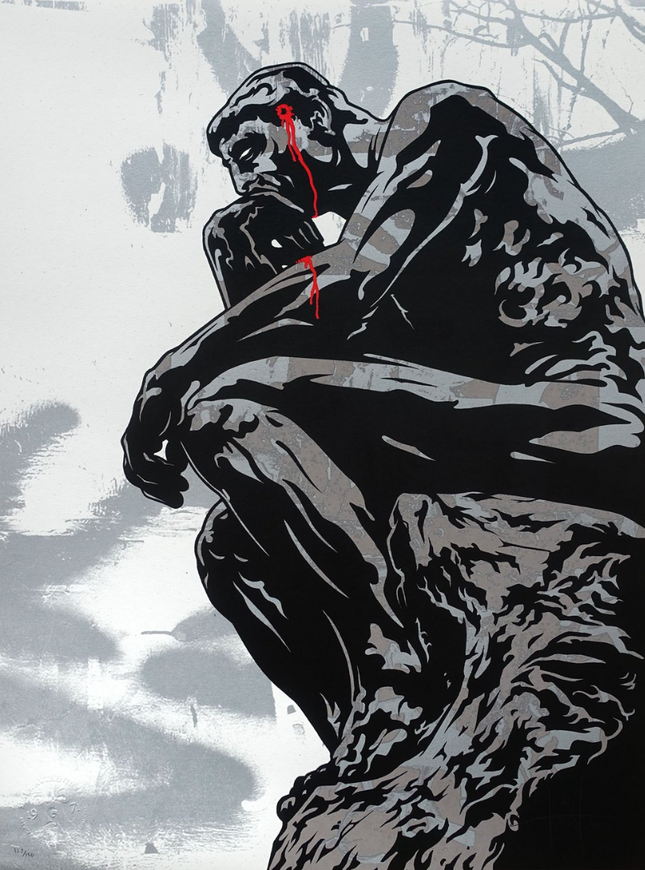
School & Education

Shepard Fairey- OBEY Stop The Violence! Voices of Parkland Silkscreen Print by Shepard Fairey- OBEY
Stop The Violence! Voices of Parkland 2-Color Hand-Pulled Limited Edition Silkscreen Print on Cream Speckle Tone Paper by Shepard Fairey Rare Street Art OBEY Pop Artwork Artist. "Voices of Parkland" Screen Print on Cream Speckle Tone Paper by Shepard Fairey. It measures 18" x 24"
$421.00

Dave Kinsey Assassination Blue Silkscreen Print by Dave Kinsey
Assassination Blue Silkscreen Print by Dave Kinsey Hand-Pulled 4-Color on Off White Archival Fine Art Paper Limited Edition Pop Street Art Artwork. 2007 Signed & Numbered Limited Edition of 150 Artwork Size 18x24 Silkscreen Print by Dave Kinsey based on Auguste Rodin's The Thinker "I created this piece in 2007, which is a commentary on the slow degradation of the education system in the United States—an assassination of the educational nourishment of the people and our society. This piece references Rodin’s “The Thinker” sculpture whose pose is based on deep thought and contemplation. Our schools, universities, and so forth are catalysts to greater change and progress and we as humans need to protect this at all costs." -Dave Kinsey, Two Thousand & Twenty-Three Dave Kinsey is a contemporary artist known for his mixed media work that often blends urban street art influences with fine art practices. His work often explores themes of the human condition, society, and the environment. Kinsey often utilizes silkscreen printing in his work, which is a process that involves pushing ink through a mesh screen to create an image. This technique allows for the production of multiple copies of a design, with each print being an original piece of art. Kinsey's artwork varies in subject matter, and he has created a wide array of prints, paintings, and installations. The Thinker is a bronze sculpture by the French artist Auguste Rodin, which was first cast in 1902. The sculpture depicts a nude male figure, hunched over with his chin resting on one hand and his other hand resting on his knee, deep in thought. Dave Kinseys version, The Thinker has a bullet hole in his head. The pose of the figure is meant to evoke the idea of a man contemplating the meaning of life, and it has become an iconic symbol of philosophy and intellectualism. Rodin originally created The Thinker as part of a larger commission for a set of bronze doors for a museum in Paris. The doors were to depict scenes from Dante's Divine Comedy, and The Thinker was originally conceived as a representation of Dante himself, contemplating the depths of hell. However, the sculpture became so popular that Rodin eventually decided to make it a standalone piece, and he created multiple versions of The Thinker in various sizes and materials. Today, The Thinker is one of the most recognizable sculptures in the world, and it has been widely reproduced and referenced in popular culture. It is also considered a masterpiece of the modern era, and it continues to inspire artists and thinkers around the world.
$515.00$438.00

Dave Kinsey Assassination Silver Silkscreen Print by Dave Kinsey
Assassination Silver Silkscreen Print by Dave Kinsey Hand-Pulled 4-Color on Off White Archival Fine Art Paper Limited Edition Pop Street Art Artwork. 2007 Signed & Numbered Limited Edition of 150 Artwork Size 18x24 Silkscreen Print by Dave Kinsey based on Auguste Rodin's The Thinker "I created this piece in 2007, which is a commentary on the slow degradation of the education system in the United States—an assassination of the educational nourishment of the people and our society. This piece references Rodin’s “The Thinker” sculpture whose pose is based on deep thought and contemplation. Our schools, universities, and so forth are catalysts to greater change and progress and we as humans need to protect this at all costs." -Dave Kinsey, Two Thousand & Twenty-Three Dave Kinsey is a contemporary artist known for his mixed media work that often blends urban street art influences with fine art practices. His work often explores themes of the human condition, society, and the environment. Kinsey often utilizes silkscreen printing in his work, which is a process that involves pushing ink through a mesh screen to create an image. This technique allows for the production of multiple copies of a design, with each print being an original piece of art. Kinsey's artwork varies in subject matter, and he has created a wide array of prints, paintings, and installations. The Thinker is a bronze sculpture by the French artist Auguste Rodin, which was first cast in 1902. The sculpture depicts a nude male figure, hunched over with his chin resting on one hand and his other hand resting on his knee, deep in thought. Dave Kinseys version, The Thinker has a bullet hole in his head. The pose of the figure is meant to evoke the idea of a man contemplating the meaning of life, and it has become an iconic symbol of philosophy and intellectualism. Rodin originally created The Thinker as part of a larger commission for a set of bronze doors for a museum in Paris. The doors were to depict scenes from Dante's Divine Comedy, and The Thinker was originally conceived as a representation of Dante himself, contemplating the depths of hell. However, the sculpture became so popular that Rodin eventually decided to make it a standalone piece, and he created multiple versions of The Thinker in various sizes and materials. Today, The Thinker is one of the most recognizable sculptures in the world, and it has been widely reproduced and referenced in popular culture. It is also considered a masterpiece of the modern era, and it continues to inspire artists and thinkers around the world.
$515.00$438.00




